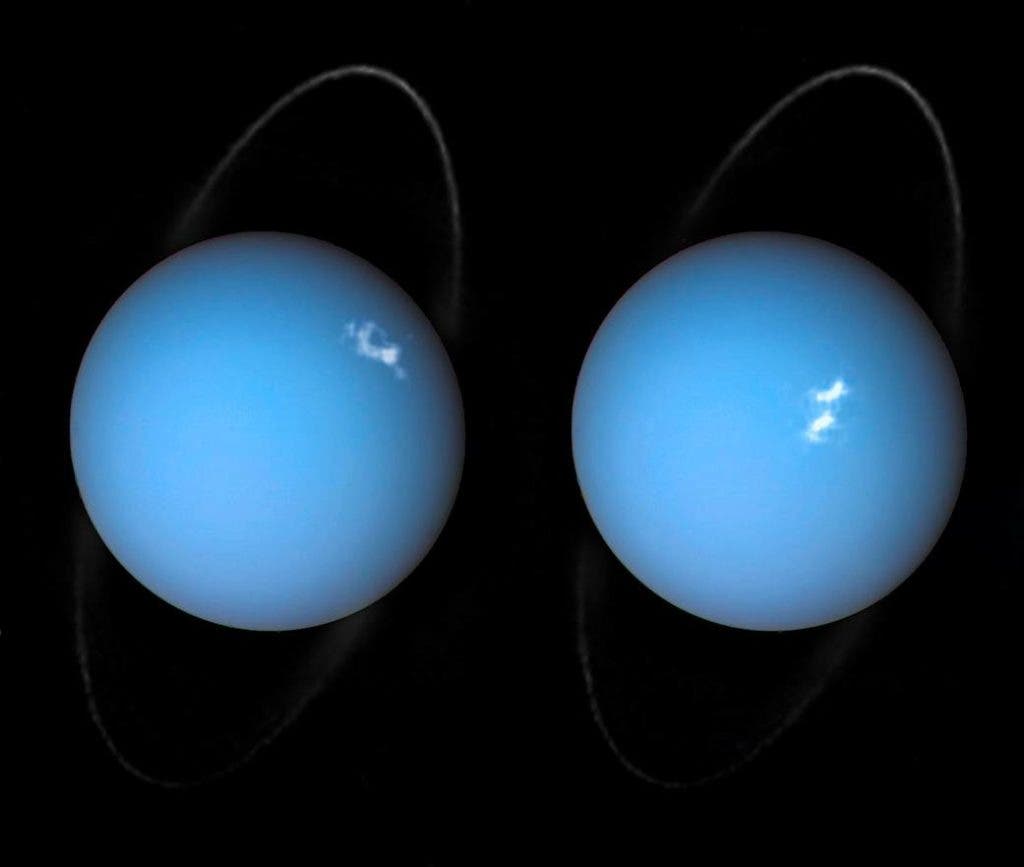Stargazers and happy campers everywhere rejoice whenever they’re fortunate enough to catch an aurora borealis. Our planet, however, isn’t the only one graced by such spectacles. These phenomena have been seen before on Jupiter, Saturn, Uranus, Neptune, Venus, and Mars.
The most well studied extraterrestrial auroras are on Jupiter and Saturn while those that occur on the giant ice planet Uranus have been poorly reported. It was only in 2011 when NASA and the ESA snapped the first image of an aurora on Uranus. Now, the gaps are closing in with this remarkable composite image of Uranus by Voyager 2 and two different observations made by Hubble. The event was no accident as astronomers tracked two powerful bursts of solar wind spewed by the sun towards Uranus then directed their imaging instruments towards the gas giant.
Auroras are caused by charged particles like electrons that interact with molecules from a planet’s atmosphere or magnetosphere. This particular event imaged by NASA is the most intense seen on Uranus so far. Coupled with previous observations, astronomers now know that these powerful shimmering regions rotate along with the planet. Moreover, the observations enabled us to re-discover Uranus’ magnetic poles which became unidentifiable shortly after Voyager 2 discovered them in 1986 due to some uncertainties in measurement.










